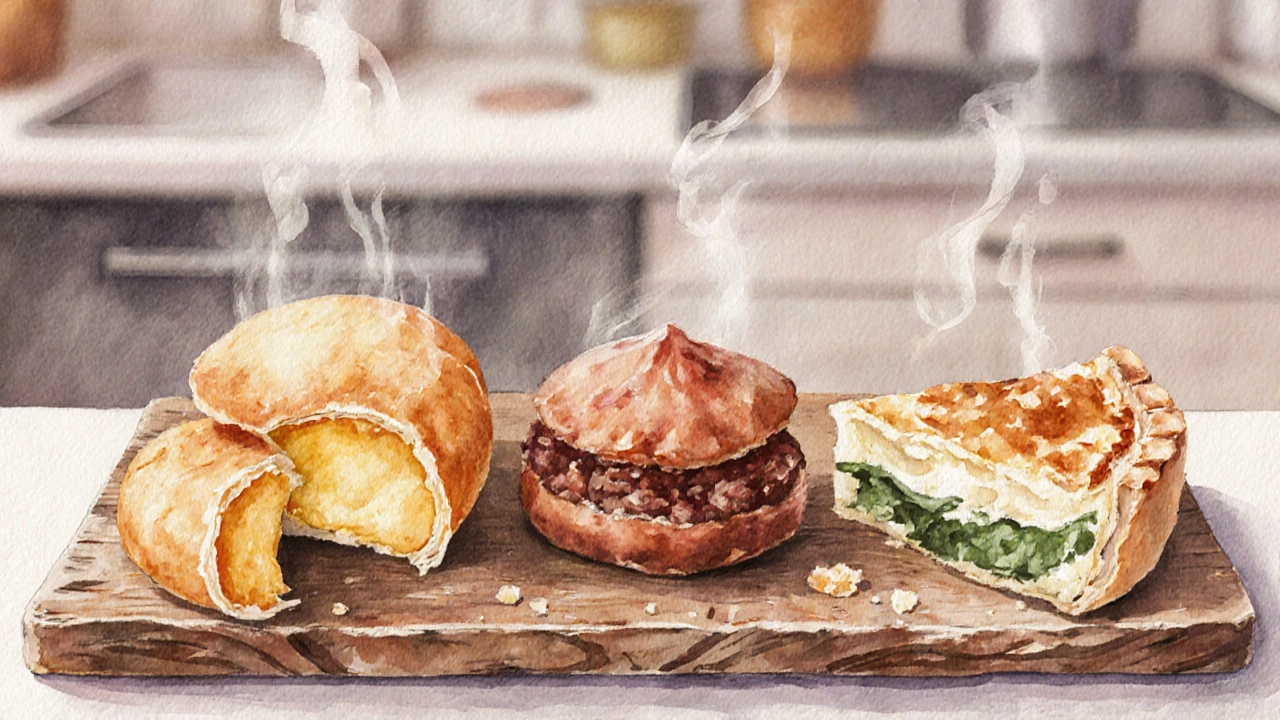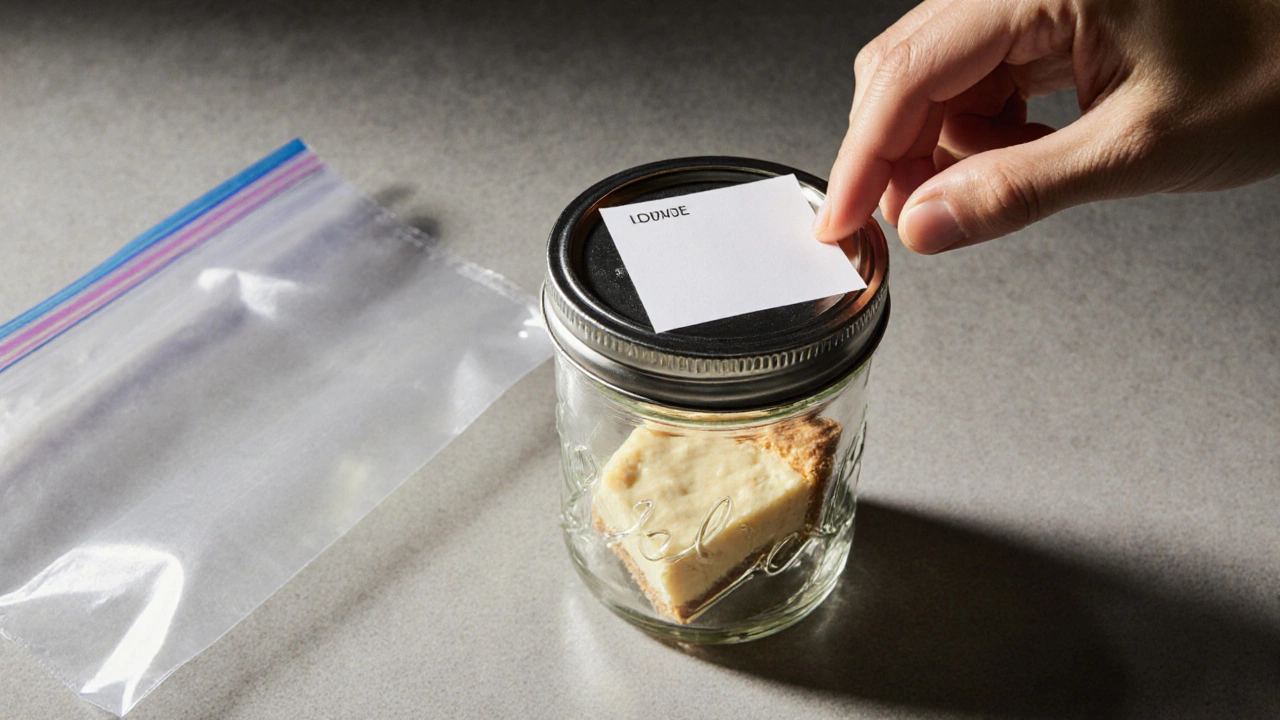Salgado Refrigeration Calculator
Determine Safe Storage Time
Select your savory snack type to see recommended refrigeration duration and safety tips
Recommended Storage Time
Additional Safety Tips:
Ever wondered how many days you can keep that tasty Salgado is a Portuguese term for a wide range of savory baked or fried items such as pastries, pies, and snack rolls in the fridge without risking spoilage? You’re not alone. Whether you baked a batch for a party or grabbed a ready‑made snack from the store, knowing the safe window helps you avoid waste and nasty food‑borne illnesses.
Understanding Refrigerator Basics
Before diving into exact timelines, let’s talk about how a refrigerator works. A typical home unit maintains a temperature between 34°F (1°C) and 40°F (4°C). This range slows down bacterial growth but doesn’t stop it entirely. The U.S. Department of Agriculture (USDA) defines the “danger zone” as 40°F (4°C)-140°F (60°C), where most harmful microbes multiply rapidly.
Key Factors That Influence Shelf Life
- Ingredient composition: High‑protein or high‑moisture items (cheese, eggs, meat) spoil faster than dry pastries.
- Packaging: Airtight containers keep out moisture and air, extending freshness.
- Initial temperature: Foods that enter the fridge warm need extra time to reach safe temperatures.
- Refrigerator load: Overcrowding slows air circulation, creating hot spots.
Typical Shelf Life for Common Salgado Varieties
| Item | Primary Ingredients | Recommended Refrigerator Time | Notes |
|---|---|---|---|
| Cheese‑filled pastry | Cheese, dough, butter | 3-4 days | Keep sealed; discard if sour smell appears. |
| Meat empanada | Ground meat, spices, dough | 2-3 days | Reheat to 165°F (74°C) before eating. |
| Vegetable samosa | Potatoes, peas, spices, pastry | 4-5 days | Warm in oven for crispness. |
| Quiche slice | Eggs, cream, cheese, crust | 3-4 days | Check for curdling of the filling. |
Why Tiramisu Is a Different Story
Even though the title mentions tiramisu, that dessert follows its own set of rules. Tiramisu is an Italian layered dessert made from coffee‑soaked ladyfingers, mascarpone cheese, cocoa, and often a splash of liqueur. Because it contains raw eggs (or pasteurized equivalents) and dairy, the safe refrigeration window is usually 2-3 days. Unlike most salgado storage time guidelines, tiramisu’s high moisture content and lack of a cooked crust make it more susceptible to mold.

How to Test If Your Salgado Is Still Good
- Inspect the surface for mold or discoloration.
- Smell it - a sour or ammonia‑like odor signals spoilage.
- Touch the texture - soggy or excessively dry pieces may be past their prime.
- If in doubt, heat it to at least 165°F (74°C) for 15 minutes; this can kill many bacteria but won’t fix toxin‑produced food poisoning.
Best Practices for Extending Shelf Life
- Cool before refrigerating: Let hot baked goods rest at room temperature for no more than two hours.
- Use airtight containers: Glass jars with tight‑fitting lids work best.
- Label with date: A simple sticker helps you track how long items have been stored.
- Store in the back: The back of the fridge stays colder than the door.
- Freeze for longer storage: Most salgado freeze well for 1-2 months; thaw in the refrigerator before reheating.
What the Science Says About Bacterial Growth
Microbiologists measure growth using the logarithmic growth curve. At 35°F (1.6°C), common spoilage bacteria like Listeria monocytogenes double every 24-48 hours, whereas at 40°F (4°C) the interval shortens to 12-24 hours. This is why the USDA recommends consuming perishable foods within the 3‑day window for most cooked items.

When to Toss Instead of Eat
If you notice any of the following, discard the item immediately:
- Visible mold (green, black, or white fuzzy patches).
- Off‑flavors or a sour, rancid smell.
- Slimy texture on the crust or filling.
- Storage beyond the recommended days without proper sealing.
Eating spoiled salgado can cause foodborne illness, which may lead to nausea, vomiting, diarrhea, and in severe cases, hospitalization.
Quick Reference Cheat Sheet
- Cheese‑filled pastry: 3-4 days
- Meat empanada: 2-3 days
- Vegetable samosa: 4-5 days
- Quiche slice: 3-4 days
- Tiramisu: 2-3 days
- Freezing: Up to 2 months for most items
Frequently Asked Questions
Can I leave salgado out at room temperature overnight?
No. The USDA’s two‑hour rule states that perishable foods should not sit at room temperature longer than two hours (one hour if the ambient temperature exceeds 90°F/32°C). After that, bacterial growth can reach unsafe levels.
Is it safe to reheat leftovers multiple times?
Reheating can kill most bacteria, but toxins produced by certain microbes (like Staphylococcus aureus) are heat‑stable. It’s best to reheat only once and consume within a day.
Should I store salgado in the same drawer as raw meat?
Never. Cross‑contamination can transfer harmful bacteria. Keep cooked or ready‑to‑eat items on the upper shelves, away from raw proteins.
How long can frozen salgado be stored before quality drops?
For best flavor and texture, use frozen salgado within 1-2 months. After that, freezer burn can affect taste, though safety may remain.
Does adding a splash of liqueur to tiramisu affect its shelf life?
Alcohol can slow bacterial growth slightly, but it doesn’t significantly extend the fridge window. Stick to the 2-3‑day guideline.
Next Steps
Now that you know the proper timelines, grab a marker, label those containers, and enjoy your salgado worry‑free. If you’re planning to make a batch ahead of a gathering, consider freezing half and thawing just before serving-your guests won’t notice the difference, and you’ll avoid last‑minute food safety worries.